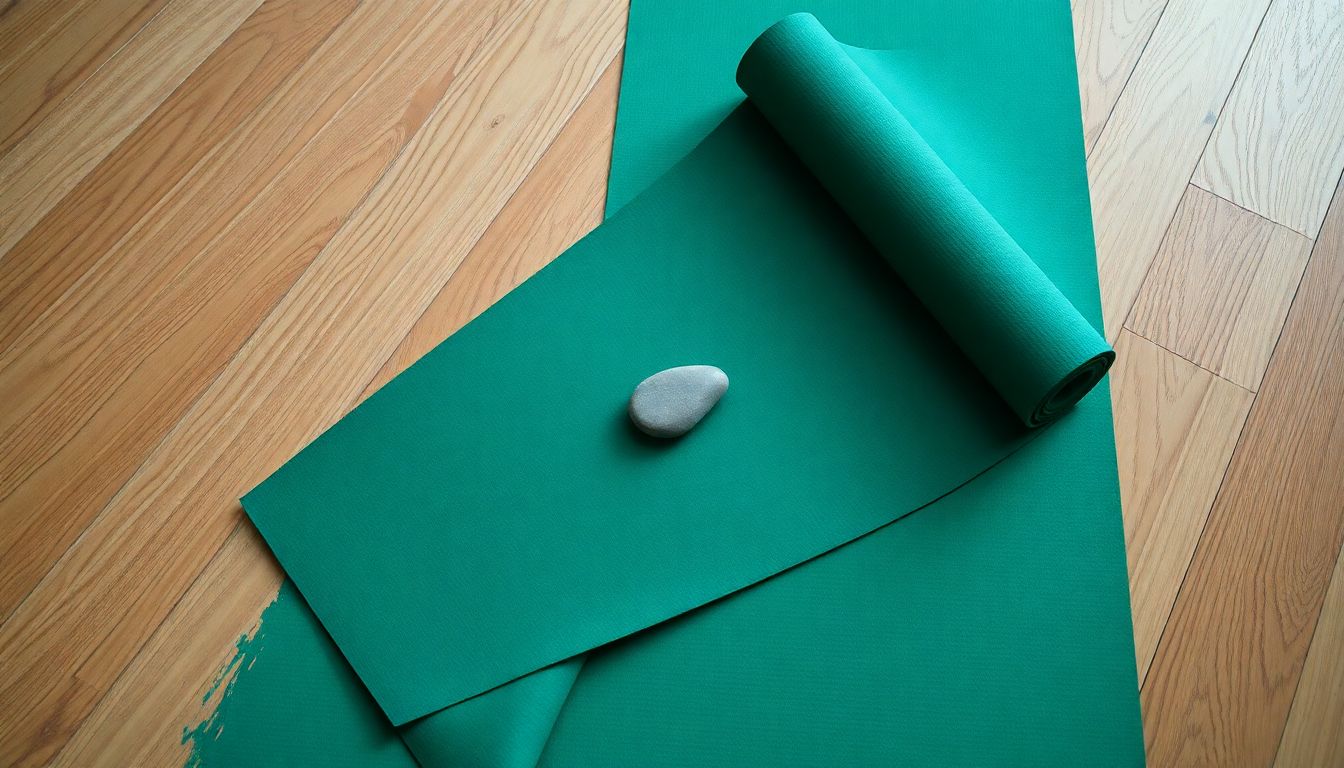Which Side of Your Yoga Mat is Up?
A Definitive Guide

Confusion often reigns when it comes to yoga mats. Picture this: You're ready to flow into your favorite poses, but you're not sure if the sticky side is facing up or down. This simple dilemma can lead to awkward moments in class. Knowing which side of your yoga mat should be up is crucial for a successful practice. This article will clarify that mystery and explain why mat orientation matters.
Understanding Yoga Mat Materials and Textures
Common Yoga Mat Materials
- PVC (Polyvinyl Chloride): Often seen as affordable, PVC mats are durable yet can be slippery.
- TPE (Thermoplastic Elastomer): Eco-friendly and lightweight, TPE mats provide decent grip without the harmful chemicals found in PVC.
- Natural Rubber: A popular choice for yogis, these mats offer a strong grip but may have a distinct smell initially.
The Importance of Grip
Different yoga styles demand different levels of grip. For instance, hot yoga requires mats that prevent slipping, while restorative yoga may be less demanding. A good grip helps keep you stable during challenging poses.
Texture Variations
The texture of the mat impacts grip and comfort. Some mats feature a raised pattern for better traction, while others have a smooth surface that feels soft against the skin. Choose what feels best for your practices.
The "Top" Side: Identifying Key Features
Visual Cues
Observe your mat closely. Many mats display logos, labels, or the manufacturer's name. These markers often indicate the top side.
Tactile Differences
Feel the mat. The top side typically has a different texture compared to the bottom. It is designed for comfort and grip. If one side feels smoother, that's usually the side meant for your feet.
Manufacturer Guidelines
Many brands include instructions on their packaging or website. Check their guidelines for clues about which side faces up.
The "Bottom" Side: Function and Purpose
Non-Slip Surface
The bottom is usually textured for a purpose. It creates a non-slip surface that grips the floor. This prevents mat movement, allowing you to focus on your practice.
Material Composition
The material used on the bottom often differs from the top. It's made to withstand more wear and tear, ensuring longevity.
Preventing Mat Movement
A well-designed bottom keeps your mat in place. Whether you're in downward dog or warrior pose, a secure mat means one less thing to worry about.
Common Mistakes and Misconceptions
The Myth of "Either Side Works"
Many believe that any side can be used. This couldn't be further from the truth. Wrong orientation can lead to slips or discomfort.
Impact on Performance
Using the wrong side may hinder performance. You might struggle with poses that require balance and stability. Statistics show that improper mat use can contribute to yoga injuries. Approximately 30% of yoga practitioners report injuries linked to mat issues.
Real-world Examples
Many yogis have experienced the frustration of using the wrong side. Imagine trying to hold a pose, but your mat keeps sliding. This can break focus and disrupt the flow of the practice.
Choosing the Right Yoga Mat for Your Needs
Mat Material Selection Based on Practice Style
Choosing a mat based on your yoga style is essential. For hot yoga, look for mats with superior grip and moisture-wicking properties. For gentle yoga or restorative practices, comfort may take precedence.
Importance of Proper Mat Maintenance
Keep your mat in good condition by cleaning it regularly. Use mild soaps that match its material. Avoid harsh chemicals that can wear down the surface.
Expert Recommendations
Consult yoga instructors or mat manufacturers for tips. They often provide valuable insights into selecting and caring for mats.
The smooth side of the yoga mat | How to Roll Up a Yoga Mat
Conclusion: Mastering Your Mat
Finding the correct orientation for your yoga mat is vital for a successful practice. Remember, the side with more grip should face up, ensuring stability and comfort. The next time you roll out your mat, take a moment to check which side is up. Your practice will thank you for it.

